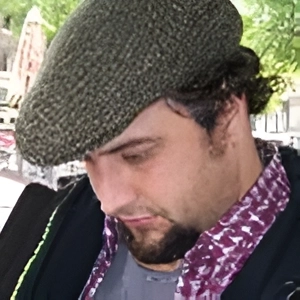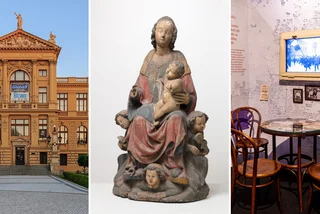Introduction
Today there are over 60,000 Vietnamese people living in the Czech Republic, making them the third largest minority after Ukrainians and Slovaks. This figure is based on the most recent survey provided by the Czech Statistical Office from the end of 2010. (The information can be found on the link under the heading “T01 Cizinci podle typu pobytu, pohlaví a státního občanství”.) The community has grown more than threefold since 2001, the time of the last census.
From these, just over 36,000 Vietnamese people have permanent residency in the Czech Republic, which accounts for around 60% of the community, making it the proportionally largest rate for communities numbering over 10,000. By way of contrast, of the people from the USA, who officially number about 6,074, only around 2,766 are permanent residents, or about 45%. (Figures based on the table cited above.)
Traditionally, the Vietnamese community is mostly located in Prague. Smaller Vietnamese communities can be found around Karlovy Vary and in north Bohemia around Ústí nad Labem. Unfortunately the figures relating to localities are about a decade out of date. More will be known about the Czech Republic’s ethnic mix following this year’s census.

Miss Vietnam Pageant, held in Prague January 2011
History
Vietnamese first started arriving in former Czechoslovakia during the communist regime. The majority came for two reasons, work or study, and their stay was part of two bilateral agreements made by the communist nations. Many were employed in machine-building and light industries, including textiles. Students studied mostly in technical fields, though some studied Czech language and literature and even that seemingly quintessential Czech art – puppetry.
By the eighties, it is estimated that the community was about 30,000 strong, two thirds of whom were employed as workers. The Velvet Revolution in 1989 meant that the former agreements had become invalid, and many Vietnamese people had to return to their homeland.
Following the revolution, immigration started anew. The earliest figures (published in S vietnamskými dětmi na českých školách) from 1994 state that at this time 9,633 Vietnamese people were living in the Czech Republic. Unlike immigration under communism, which was promoted for reasons of national development and political solidarity (at least officially), today’s Vietnamese are coming to the Czech Republic for more varied reasons. Some are still coming for employment opportunities whereas others are coming for business. There are also more and more Vietnamese working professions, such as law, journalism, and medicine – to name a few.
Furthermore, it is in the post-revolutionary period when a community, in the sense that it is generally understood, started to take shape. The Vietnamese population became more visible, a group of people bound by shared language and customs and not just a group of people from Vietnam. These signs of a community were not just seen in the economic sphere – the one perhaps most alluded to in this country – but in cuisine and even in religious faith.
To get a more personal perspective, we were fortunate enough to speak with Mr. Nguyen Kim Phung, a professional translator who has been living here for over thirty years. He was also a student here from 1979 to 1984 at ČVUT, so he’s in a unique position to compare first-hand the transition over the years.
Mr. Phung says that, in the communist period, Czech society tended to regard Vietnamese people as simply coming from a poor nation. After the revolution, when he returned, he said the attitude improved in comparison with the past.
He adds that many of the Vietnamese who returned had been here before the revolution. However, they were coming back for different reasons. Broadly speaking, Mr. Phung identified two groups. Those who were returning for work and to improve their life. Another group were coming to do business and increase opportunities.
To these categories we could probably add one more, people seeking experience. One young Vietnamese man we met at Sapa said, through a translator, that he came simply for the opportunity to try something different. Back in Vietnam, the Czech Republic is presented as a good place to come.

Inside a grocery shop. Photo: Vendula Kosíková
Culture, Traditions and Beliefs
According to Eva Pechová from Klub Hanoi (more on them below), the religious beliefs of the Vietnamese community are quite diverse. Among them you will find Buddhists, Confucianists, ancestor worship and Catholics.
“There is a degree of syncretism (the combining of religious beliefs and/or practices) in the community. Families will celebrate a traditional Czech Christmas with the carp and presents, and then a few weeks later celebrate Tet.”
Tet, or to give it’s full name, Tết Nguyên Đán, is the celebration of the coming of the new year according to the traditional lunar calendar. Celebrations in Vietnam vary based on regions. However, among the Vietnamese community of the Czech Republic there are some common customs. One of the main items is Bánh chưng, a dish made form sticky rice, filled with mung beans and pork and wrapped in dong or banana leaves. Another dish is boiled chicken – which is prepared with spices to give the skin a characteristic yellow color.
The celebration is also time to give gifts, many of which have special significance. One such ceremonial gift is a peach blossom branch, which is intimately tied to Tet. The branch is believed to expel evil. Other traditions require people to conduct themselves with more civility at this time of year.
However, the observance of these traditions depends on individual families. Mr. Phung said that regarding Vietnamese families in the Czech Republic, where the people are less educated tend to uphold customs more. Those who are more educated tend to behave more European. He did stress that this was his personal view.
Sapa
One place where you will be sure to witness the Tet celebrations, not to mention other aspects of Vietnamese culture, is Sapa,the sprawling market complex named after the Sa Pa region in northern Vietnam. At the Sapa in Prague, traders sell clothes, Asian fruits, vegetables and spices, and traditional Vietnamese cuisine.

Sapa Marketplace
Sapa today still bears the scars of the fire which destroyed part of the complex in 2008. Yet, despite the size of the fire, much of the market remained untouched, and if you want to explore the site, set aside a couple of hours.
To non-Vietnamese, Sapa may seem like an agglomeration of shops and eateries. However, another young man we spoke to there said Sapa was something special. It was more than business. He said, “If you’re Vietnamese, and you’re in Prague, you know you can come to Sapa. You know you will be looked after here.”
If you’re interested in visiting Sapa for yourself, you should probably go by foot as entering by car requires a business license. The nearest bus stop to Sapa is Sidliště Písnice and buses 113, 198, 197, 331, 333 and 504 run there. The 333 is a pretty good option. It goes from the metro stop Budějovická (across the street from the KFC). Between 13:00 and 17:50 it runs every 15 minutes and the journey takes about 20 minutes.
There are plenty of places to eat here and it’s just a matter of going and exploring. If you don’t wish to traipse through the vast market (though traipsing is part of the fun) the restaurant Dong Do, just behind the aforementioned entrance, does a decent Pho (Here is an audio file of the pronunciation), the well-known Vietnamese noodle soup.
Acceptance / Integration
Trying to generalize in this regard is going to be difficult. Whenever I asked people who were close to this topic their answer was that it is complex. Acceptance was acknowledged as was more open hostility.
One interesting comment made by Jaroslav Picka, the editor of Viet Magazín, is the tendency for Czechs to use the informal form of you (ty) with most Vietnamese people they meet. Within Czech society this is quite disrespectful.
Mr. Phung said that on the whole, Czech people, at least the ones he knew, were kind-hearted. Of course he acknowledged that there were hostile elements, such as skin-heads, though at the end of the conversation he hastened to add that Czech people are good people. At the end of our conversation he said, “I will always be Vietnamese, but I like it in the Czech Republic more because I like the freedom.”
Organizations for Building Relationships
Located at Sapa is a Czech Vietnamese friendship society called Klub Hanoi. Started in 2003 by students, the group run mostly by volunteers offers legal advice and advice with Czech bureaucracy for Vietnamese immigrants. On the other side, it provides information for Czechs on the Vietnamese community. Klub Hanoi is also involved in promoting Vietnamese culture and was involved in an exhibition of Vietnamese culture in the Czech Republic at the Museum of Prague. They also produces a series of very useful booklets on various aspects of Vietnamese culture, including the community in the Czech Republic, Vietnamese cuisine and religion among Vietnamese people. The booklets are in Czech.
Connected with Klub Hanoi is Viet Magazín, a free monthly magazine written by Vietnamese-Czechs. The publication provided some useful information on the community here and is undoubtedly another way in which they can forge links with the broader society. As mentioned above, the magazine is edited by Jaroslav Picka.
Have you had any experience with the Vietnamese community in Prague? Let us know through the form below.
Check back with us next month as we take a look at the Ukranian community in the Czech Republic.
***
Other articles in this series:












 Reading time: 7 minutes
Reading time: 7 minutes 

























